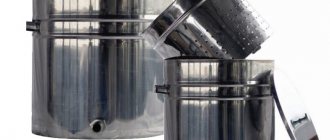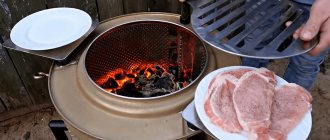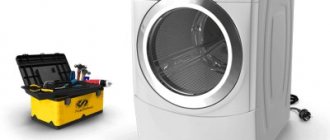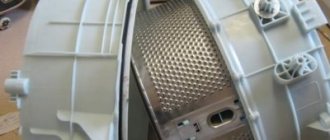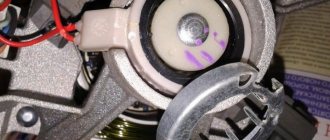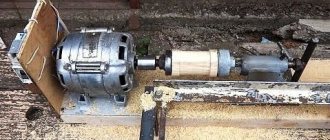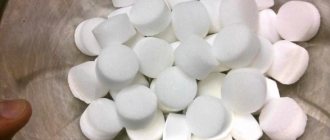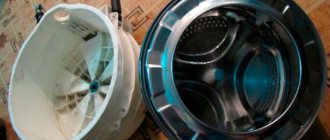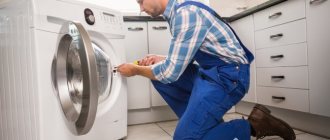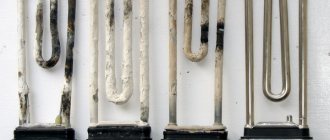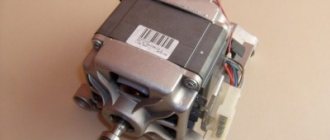If you run out of conditioner while washing, you don’t need to run to the store; you can make it yourself from what you have on hand. The effect of a homemade product is no worse than a store-bought one, and most importantly, it contains less harmful chemicals, especially for allergy sufferers. DIY fabric softener for a washing machine: recipes, tips and tricks.
Pros and cons of using homemade products
Homemade air conditioners are no less effective than expensive household chemicals. Among their advantages it is worth highlighting:
- increasing the comfort of wearing clothes, which after washing acquire a pleasant softness;
- removal of electrostatic effects, which is especially important when regularly wearing synthetic or woolen items;
- easier ironing;
- low likelihood of developing allergic reactions;
- eliminating the possibility of intoxication of the body;
- ease of preparation;
- low cost of necessary ingredients;
- preservation of original color;
- keeping clothes clean for a long time.
Due to the fact that most fabric softeners contain aromatic substances, clothes will acquire a pleasant aroma after washing. Also among the advantages of DIY products are:
- the ability to give things any scent by adding various essential oils to the conditioner;
- environmental safety, since waste after washing is not hazardous to the environment;
- facilitating the task of removing powder or soap residues while rinsing things.
Among the disadvantages of rinse aids, it is worth highlighting their low efficiency when washing multi-colored items. In addition, white streaks may form on dark clothes.
Why it's worth a try
If you look at the composition of a purchased product, you can see a whole list of chemical ingredients, for example:
- benzyl alcohol;
- linalool;
- ethanol;
- pental.
These substances function as aromatic fillers, but can be harmful to health and cause a number of diseases. Their effect on the fragile bodies of children and allergy sufferers can be too harmful. Headache, allergic reactions, apathy, nervous disorders are possible consequences of washing clothes with store-bought conditioner.
In addition, making an environmental rinse with your own hands is more profitable than purchasing the product in a store. A large family and the presence of small children are the main reasons for frequent washing. Therefore, thrifty lovers of clean and fragrant things are inspired by the idea of how to make homemade fabric softener yourself. The advantages of a homemade mouthwash include:
- saving the family budget;
- creating your own scent;
- made from environmentally friendly components;
- absence of allergic reactions;
- long storage and more economical use;
- high-quality removal of contaminants;
- softening fabric fibers.
Effective recipes
Replacing commercial air conditioners can use products available in the home. Among them, boric acid, hair balm, vinegar, soda and table salt are most often used.
See also
How to choose the right mattress for a double bed, requirements and types
Vinegar
Instead of laundry detergents, a 9% vinegar solution is perfect. The acid contained in it helps disinfect things. In addition, it is a good prophylactic agent that prevents the formation of plaque in the heating device of the washing machine.
Before washing, add 80-100 milliliters of table vinegar to the conditioner tray. After processing, the clothes are hung outside. This rinse aid will make it possible to preserve the original structure of things, as well as their color and softness.
Soda
When washing clothes with soda, you need to add 100-120 grams of the product to the special compartment for conditioner.
To avoid the appearance of white stains on dark clothes, the powder must be dissolved in advance in 150-200 milliliters of warm water.
Apart from this, you can make another home remedy using soda. To do this, you need to take 100 grams of soda, as well as 100 milliliters of warm water and vinegar. Next, the ingredients are mixed in a plastic container. You can also add a few drops of aromatic essential oil. Then the mixture is thoroughly mixed and poured into a glass container made of opaque material.
Borax
This product is often used to soften washing water. It can also be used to treat rubber gaskets of washing machines for disinfection. In addition, borax is excellent for removing stains that cannot be removed when using conventional air conditioners.
After using boric acid, the fabric becomes softer. It is easier to iron. To make the product, you need to dilute 50 grams of borax in 100 milliliters of water. The substance does not need to be prepared in advance. It should be stored in a closed container and out of reach of sunlight.
Salt
To create a salt rinse, you need 100 grams of the product along with 10 drops of essential oil. Mix the ingredients, cover with a lid and shake well. The product should be used 2 tablespoons before washing. It will help restore the original color of clothing and soften the fabric fibers, making it softer.
See also
Basic ways to remove a mosquito net from a plastic window
With hair balm
The product softens water and things well. To prepare an effective product, you need to mix 150 milliliters of the substance, 200 milliliters of vinegar and 400 milliliters of water. Add no more than 4 spoons during each wash. To give the product a pleasant aroma, you can add 8-10 drops of essential oil.
Review of popular brands
Choosing the best air conditioner is not easy; before purchasing, pay attention to the following characteristics:
- type of product (rinse aid, antistatic, etc.);
- composition (it is better that it does not contain aggressive substances that cause allergies);
- release form;
- smell (a heavy “aroma” can cause an allergic reaction).
Let's look at a few popular brands that have received good customer recommendations.
Lenor
Lenor fabric softener is known for giving laundry a pleasant, fresh aroma that lasts from 2-3 days to a week.
The innovative formula created by the manufacturer does an excellent job of softening fabrics and also repels dirt, which allows the laundry to stay clean longer and the static effect is reduced.
Lenor is available in a convenient thick gel form with a dispenser cap. This allows you to use a minimum amount of rinse aid per wash.
Vernel
This brand produces several types of conditioners for adult and children's underwear, with different scents. Among the advantages are:
- environmentally friendly composition;
- antibacterial and antistatic effect;
- unobtrusive aroma;
- no dyes;
- washes out easily, so does not require additional rinsing;
- The price-quality ratio is very good, consumption is economical due to the consistency and the presence of a dosing cap.
Vernel has been tested by dermatologists, so it can be safely used by people with allergies, sensitive skin or small children.
Synergetic
Eco-friendly biodegradable air conditioner made in Russia. It has a simple, understandable composition, the main active ingredient is of plant origin, which is completely rinsed out. Thanks to this, Synergetic conditioner is hypoallergenic and suitable for children's clothes and clothes for allergy sufferers.
The active formula not only preserves the quality of clothes, but also makes them fresh and smelling good. The composition also includes oils that soften the fabric and skin of the hands during hand washing. However, according to reviews, this product weakly removes static electricity.
Biomio
The mouthwash of this brand is also environmentally friendly, but no less effective.
The advantages include:
- impeccable natural composition;
- light unobtrusive aroma;
- use for children's underwear, as well as for clothing of people suffering from allergies;
- elimination of folds and dents;
- restoration of tissue structure;
- giving wool products softness and fluffiness;
- excellent softening of things;
- absolute safety, environmental friendliness of components;
- reduction of stress, anxiety, irritation due to eucalyptus oil in the composition;
- economical consumption.
Meine Liebe
The German brand Meine Liebe has proven itself well in the Russian market.
The conditioner can be used to wash clothes and clothes of both adults and children. It is suitable for people with sensitive skin, as it does not cause redness or other unpleasant reactions. Meine Liebe uses biodegradable components, so the products are environmentally friendly. The rinse aid also has a mild, pleasant smell, has an antistatic effect, and promotes easy ironing.
"Eared Nanny"
Russian-made goods are very popular. It is suitable for children even from the first day of life. People suffering from allergies will also appreciate this mouthwash. It contains aloe vera, which makes the fabric very soft, pleasant to the touch, and also has antibacterial properties.
"Eared nanny" also has an antistatic effect and a light aroma - properties that are especially important for children's underwear. The convenient form of release - a container with a handle, the presence of a dispenser cap - only adds to its popularity. An additional advantage of the Russian product is its low price compared to foreign analogues.
Replacement options
In a product based on table salt, it is recommended to replace the main ingredient with Epsom salt. This remedy is used in the treatment of cardiovascular diseases, but can also be an excellent option for creating a mouthwash at home. The hair balm product can be replaced with a high-quality shower gel.
What will you need?
If you read the composition of air conditioners that are presented in stores, the list will be impressive. And not all ingredients are good for health, especially for a child’s body. Of course, there are good mouthwashes on sale - natural based, hypoallergenic. But their price will be high.
The good thing about a homemade mouthwash is that all the ingredients in it are always at hand, are inexpensive and do not harm your health. Of course, allergic reactions to these ingredients cannot be ruled out, but they happen much less frequently than in the case of industrial air conditioners. And such a composition is prepared in just a few minutes. But how long it will last depends only on you. You can immediately prepare a spare rinse aid; it stores well.
In order to make an air conditioner at home, you will need the following components:
- vinegar;
- baking soda (can be replaced with baking soda);
- Epsom salt - sold at the pharmacy, regular salt will not work here;
- warm water;
- essential oil (lavender, orange, lemon or any other with a pleasant smell);
- hair conditioner (not conditioner or conditioner);
- container in which the conditioner will be stored (you can even take a bottle from a purchased product).
As you can see, no complex or rare ingredients are required. You probably have all this at home. If not, then a visit to the pharmacy or store will help fill in what is missing.
Washing with tennis balls
They are used to soften the fabric fibers of clothes made from coarse fabrics. To do this, place 3-4 balls in the drum and start the wash. The material from which they are made is safe for the human body. At the same time, it does not damage the fabric. For this reason, it can be used in washing delicate laundry.
This option is optimal for families with allergies or small children. Balls are also used when washing down jackets to prevent the foam filling from clumping.
Why make your own fabric softeners?
In store-bought air conditioners, the desired effect is achieved using chemicals, a significant portion of which - over 90% - can cause a severe allergic reaction in humans.
After rinsing with conditioner, the laundry smells nicer and irons better
Homemade rinses have a number of advantages over them:
- do not cause allergies;
- safe to use for adults and children;
- are cheaper.
The ancestors of modern air conditioners appeared about a hundred years ago, at the beginning of the 20th century. To soften cotton fabrics, they used vegetable oils diluted with water - corn or olive.
Other home uses
In addition to washing, these products are also used in other household tasks. Among them it is worth highlighting:
- washing windows, mirrors, walls, tiles and floors;
- cleaning clogged pipes;
- disinfection of various surfaces.
Windows and mirrors
A vinegar-based product is ideal for cleaning windows and mirrors. It is able to remove small stains and penetrate hard-to-reach places. At the same time, the substance does not leave streaks and disinfects the street side of the windows.
See also
TOP 10 ways to remove dents from furniture on linoleum at home
Walls, tiles, floor
When removing grease and dirt stains in the kitchen, use a product with vinegar. To clean the tiles, use a soda solution. With its help, you can remove the top layer of dirt, which will give the floor and walls a new look.
Blockages in pipes
If there are clogged pipes, many housewives recommend using borax. To do this, you need to pour the product into a washbasin or bathtub, then pour several liters of boiling water. After a few hours, the blockages will be cleared.
It is highly recommended not to use vinegar and soda for these purposes. When these substances come into contact with warm water, a solid material may form that can only be removed together with the pipes.
Surface disinfection
Cleaning various surfaces from pathogenic microorganisms is possible using a product based on boric acid. To do this, you need to use a weak solution, since borax can damage the upholstery or floors.
In addition, acetic acid is used for disinfection. It effectively destroys pests without harming surfaces. After using it, it is recommended to rinse the treated area with water to avoid an unpleasant odor in the room.
How to care for the rinse aid tray
To ensure that the conditioner always gets into the drum when washing, properly care for the detergent compartment. For this:
- Rinse the tray after each wash. If the substance is not completely washed out, its residue will harden over time and make it difficult for the product to reach the next time you wash it.
- Clean the container with a brush.
- Once every 3 months, run the washing machine without laundry by pouring citric acid into the trays.
- Baking soda and vinegar will help remove deposits on the walls of the compartment. Fill the tray with vinegar and sprinkle generously with baking soda on top. After 20–30 minutes, rinse the solution with water and, if necessary, scrub heavily soiled areas with a brush.
